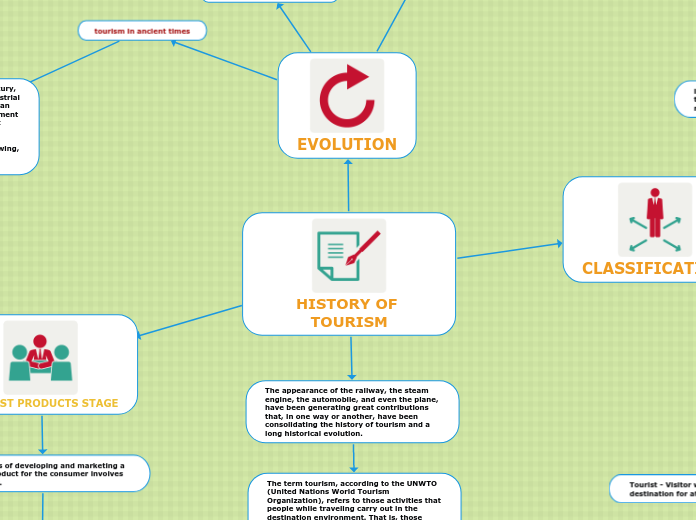
HISTORY OF TOURISM
The appearance of the railway, the steam engine, the automobile, and even the plane, have been generating great contributions that, in one way or another, have been consolidating the history of tourism and a long historical evolution.
The term tourism, according to the UNWTO (United Nations World Tourism Organization), refers to those activities that people while traveling carry out in the destination environment. That is, those activities that, for business, leisure or any other activity, are carried out in an environment other than the place of origin.

CLASSIFICATION
international tourism, that is, one in which the destination and the origin do not represent the same territory.
domestic tourism. This is the type of tourism in which the origin and destination have the same territory, that is, it is within the national territory of origin.

EVOLUTION
Contemporary age
It is when that final development that tourism needed to live the impulse that it has lived takes place the most. The expansion of tourism with technological and industrial advances experienced a boost that would place tourism as one of the main sectors, already at that time, of the world economy.
Tourism in the Modern Age
tourism is experiencing a great boom, especially in leisure tourism. That is, tourism that is carried out for fun, rest and recreation. The greater institutional stability, until the beginning of the interwar period in the Contemporary Age, provides citizens with greater security for migrations between territories. This is when the British begin to promote trends such as the "Grand Tour". A route that the young British aristocrats took through Europe, with the purpose of culturalizing themselves and completing their training in subjects such as art, languages and commerce.
tourism in ancient times
Tourism, as we know it in the 21st century, was born in the 19th century. The Industrial Revolution, in a global context, caused an exponential growth in travel and movement between territories. With very different purposes, such as wars, leisure, trade, conquest, as well as other types of purposes, tourism has not stopped growing, depending on the development of all infrastructures and transport.

TOURIST PRODUCTS STAGE
The process of developing and marketing a tourism product for the consumer involves four stages.
Market study.
supply and demand, development of the tourist program,
its economic study and prices.
